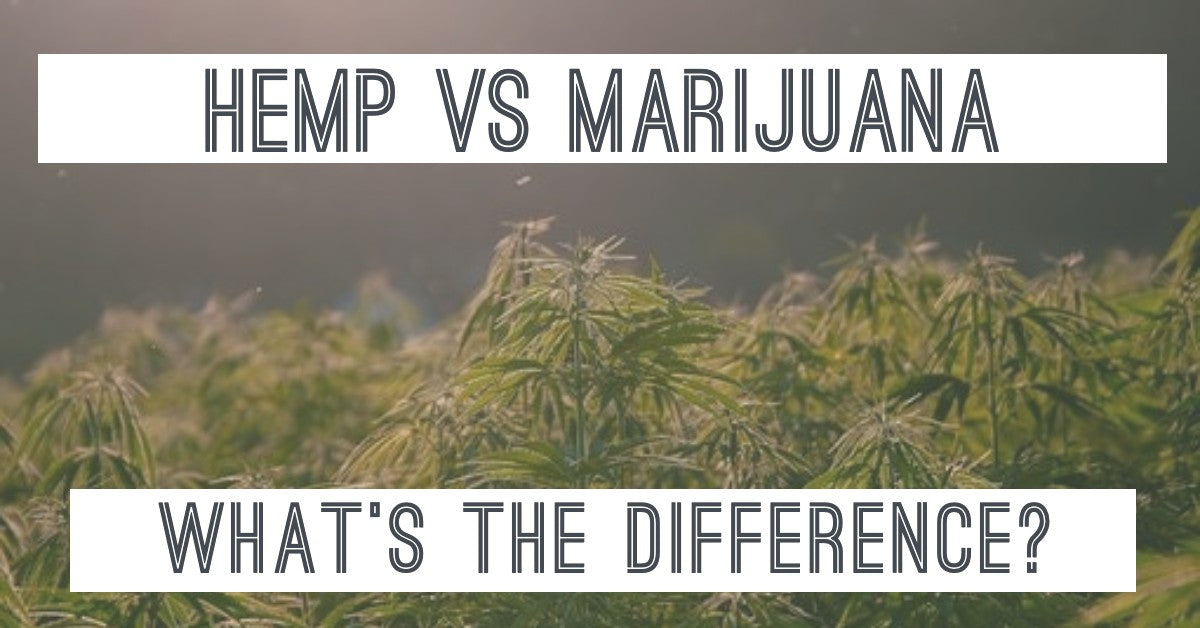
With the implementation of the Farm Bill in 2018, the cultivation and use of cannabis became more liberal and opened more opportunities. It meant having access to more durable sources of materials to create industrial-grade fabrics and ingredients to help ease health conditions, including cancer.
While Hemp remains to be a federally-accepted material source, the use of Marijuana is still subject to regulations that
states can autonomously decide. That can be confusing, as each state has its own set of laws governing the possession, use, and cultivation of cannabis as a whole. For the most part, cannabis laws per state focus primarily on whether you can have Marijuana or not, as Hemp is legal. But if both are kinds of cannabis, what sets them apart from each other?
The line between Hemp and Marijuana?
The main difference between Hemp and Marijuana lies in the concentration of tetrahydrocannabinol, or THC. Hemp has low concentrations,
often less than 0.3 percent per dry weight, making it non-psychoactive and non-intoxicating. Hemp is still cannabis and does not differ that much from other common strains.
Marijuana, meanwhile, contains at least 0.3 percent THC and is generally grown to maximize the growth of flowers and increase the concentration of THC to produce the effects desired.
If examined closely, the law that draws the line between Hemp and Marijuana focuses more on the THC content, but not so much on other factors, which may be the cause of confusion for some people.
Six Key Differences Between Hemp and Marijuana
There is more to comparing THC levels between Marijuana and Hemp. As it is, other factors distinguish the two (2) kinds of cannabis. Here are six (6) points to consider.
Appearance

You can tell Marijuana and Hemp apart from their appearance. Marijuana leaves tend to be wider, with buds that look like nuggets that have tiny crystals. Hemp, meanwhile, has thinner leaves that are concentrated on top of the plant. It does not have many branches below it. Marijuana plants tend to be shorter and plumper, while Hemp are often slender and tall, with heights that can reach up to 20 feet.
THC Concentration
Both can produce high amounts of CBD, the non-intoxicating cannabis compound; but, THC is produced at very different levels as stated before. While hemp can contain no more than 0.3 percent THC by dry weight, marijuana can contain up to 30% THC content producing psychoactive effects.
Now, even if the concentration of THC in marijuana is at the baseline of 0.3 percent, it still does not count as hemp. The same can be said if Hemp has a THC concentration that goes above 0.3 percent, it merits destruction for exceeding the allowable threshold. That usually happens when
flowering periods are prolonged.
CBD: Hemp vs Marijuana
CBD can be derived from either hemp or marijuana and they are chemically similar which should make CBD completely legal if hemp is legal right?
Wrong.
Only CBD which is "derived from hemp and hemp-derived products" are legal while CBD from Marijuana, even within the prescribed thresholds for THC content, is classified as restricted. If you don't want any issues, get your CBD only from hemp-derived sources. If Marijuana has higher levels of THC,
Hemp has more CBD in it.
Composition
There is a stark difference in the composition of Hemp and Marijuana. Hemp is known for having Vitamin E, which serves as antioxidants.
When you derive oil from Hemp, you can get doses of good fatty acids composed of:
- Gamma-linoleic acid (GLA), which can help mitigate the effects of psoriasis, atopic eczema; and
- Omega-3 Stearidonic acid (SDA), which helps in dealing with cardiovascular diseases.
Marijuana, meanwhile, is more focused on having high concentrations of cannabinoids that induce any psychoactive, yet medical benefits. If you are into extracts, you can get better extracts from Marijuana, as most of the cannabinoids are concentrated in the buds. Hemp, meanwhile, has most of its cannabinoids stored in the leaves.
Growth and Cultivation
Hemp is grown to maximize the size of the plant so and that’s usually achieved by growing outdoors as hemp does not need the level of control as it would be to growing Marijuana. Hemp has a growth cycle that lasts between 108 – 120 days.
Marijuana is mostly grown indoors, so cultivators can control how the flowers grow by taking into account many variables such as light cycles and soil nutrients. It also takes as low as 60 and can take up to 90 days to grow marijuana that is
ready for harvest.
Usage
Hemp products have always had wider availability and exposure than weed products even before the start of legalization. That is due to hemp being one of the most durable natural materials available. Hemp can be used in a variety of industrial applications such as paper, plastics, and clothing.
On the medicinal side, you get the therapeutic benefits of hemp when used in tinctures and salves. Smoking it will have no psychoactive effect, but may have therapeutic benefits.
Marijuana is known for its psychoactive capabilities used for recreational and medicinal purposes as well as therapeutic. You can smoke it to reap the benefits.
Conclusion
With the full swing enforcement of reforms in the cultivation and use of cannabis, it is crucial to know the boundaries. Knowing THC levels and source is critical as it dictates whether the product is legal for consumption or subject to regulation. The easing of restrictions in the cultivation and use of cannabis was made so that people can have more options in accessing medical care. It is incumbent among users and growers to be responsible for the use of cannabis products within the boundaries of existing laws.




